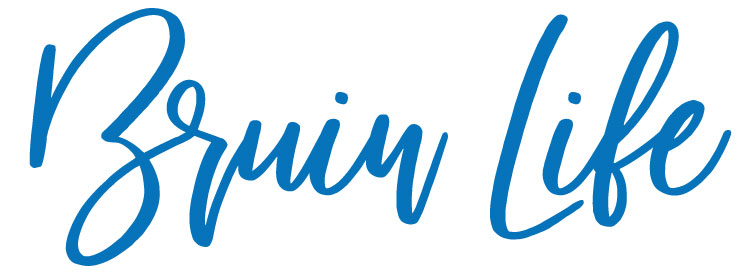We are students from the 21st century — the era of digital technology. We are able to use electronic devices to assist our academic life in college and to get rid of the old-fashioned, time-consuming and untransferable pen-and-paper method. Ready to use apps to take your college academics to the next level? Here are eight popular apps that are attainable and convenient for note taking, planning and organizing schoolwork and collaborative studying in college.
Note-taking apps: an upgrade to your in-class experience!
1. Notability
Notability is a powerful note-taking platform that will satisfy your needs to create multimedia notes and annotations. The app gives users a lot of freedom since all parts of the interface can be personalized: the size, type of paper, lines, grids and even the color and texture of handwriting in the digital notebook. It also contains buttons to insert multimedia like imported documents, audio, pictures and videos, which allows learners to create notes according to their styles and habits easily. There’s also great flexibility in the app because you can always select a portion of your notes — whether it’s a text or a fragment of a sketch — and move it freely around the page.
The app is best used with a stylus like an Apple Pencil and is suitable for classes that include intensive visual or multimedia notes. It can be downloaded in the Apple Store for iOS users but is not officially available on PC and Android devices. The free version of Notability has a limit on the number of notes that can be taken on it; the premium version costs $14.99 per year.
2. Goodnotes
Goodnotes is a multifunctional app that is helpful for note-taking in classes that require a large amount of text writing — such as an English or humanities class. One of its main advantages is that it has a built-in AI module that can edit the grammar of your written sentences and even change their length, tone and phrasing. This way, your notes can be automatically organized so that you can spend more time listening in class instead of worrying about the clarity of your notes. Goodnotes also has a flashcard function which is useful for learning scenarios like memorizing terminology and formulas.
Goodnotes can be downloaded on iOS, Android and PC devices. A free trial on Goodnotes only allows three notebooks, but an unlimited number is available once you purchase the $9.99 per year annual plan or the $29.99 lifelong plan.
3. Microsoft OneNote
If you are a big file organizer, Microsoft OneNote may be your best-fit note-taking app since it offers one of the more complete organizational structures on the market. On OneNote, you can create an unlimited number of notebooks, which can be separated into sections and then into specific pages. It also lets you organize different notes across different projects or dates. Microsoft OneNote also encourages multimedia and has a transcription feature that can put class recordings into texts. All the documents on OneNote are automatically synced to a cloud account, which makes the app great for classes that require a significant amount of file storage.
Different from the two apps above, Microsoft OneNote has a free version that includes all features (except for file storage that goes over 5GB) on iOS, Android and PC devices.
Planning & organization: on the way to becoming a better learner
1. Apple Calendar/Google Calendar
Calendars are great tools to plan your daily activities and keep track of deadlines for academic tasks. On Apple Calendar and Google Calendar, you can conveniently mark down your everyday commitments and include information about their content, time slot, location and category. You can also customize alarms so your mobile device can remind you of the activity before it begins.
Apple Calendar and Google Calendar are easily accessible on all mobile devices and web pages. For UCLA students, you can also link your calendar to your MyUCLA account and import your class schedules: from your MyUCLA Study List, click the “Weekly Schedule” button on the sidebar to download your schedule.
2. Quizlet
Need to organize what you learned in class and review for exams? Quizlet is a powerful, helpful app for categorizing knowledge and building a knowledge system, especially when it comes to memorizing vocabulary. It is designed just like a digital flashcard — you can insert any foreign vocabulary or class terminology on the front of the card, click to “flip” the card and write their definitions on the back. Quizlet is also very interactive: It can generate various forms of memorization practice such as multiple choice, pairing and true-false tests to reinforce your knowledge. You can also share your Quizlet flashcards with your study pals or import existing Quizlet sets available online if you don’t want to review them alone.
A free trial of Quizlet allows unlimited sets of flashcards, but an upgraded version that costs $7.99 per month or $35.99 per year can unlock more functions, such as inserting multimedia into the flashcards. You can access Quizlet in the Apple App Store, the Google Play store or from any web browser.
3. Todoist
It always feels good to click off all your to-dos at the end of a day! Todoist, with its concise and organized interface, is the perfect app to give you this sense of satisfaction and activate your motivation to study. You can create a checklist, mark it with customized labels and priority and view it in both the inbuilt calendar and categorized folders. Additionally, Todoist will enable you to set daily, weekly and long-term goals based on your checklist. Once a certain goal is reached, you will gain “karma points” which will help you to achieve a new “karma level,” which can unlock new themes for the app interface — it’s just like a points-based game! Todoist is available on both the Apple App Store and the Google Play store. Although most features are free, a pro version of Todoist with unlimited tasks costs $4.99 per month or $47.99 yearly.
Group work: making sure “we’re on the same page”
1. Slack
When you need to communicate with a large number of people — like creating a project as a class or organizing work from a research club — Slack will be the top choice for conducting group work. In Slack, you can achieve all levels of communication by posting announcements to the entire organization, sending messages in member-specific channels and direct-messaging individuals in the group. Slack also allows users to share documents, images and other files effortlessly. With the option to comment and edit files directly within Slack, collaborative work becomes more efficient, reducing the need for constant back-and-forth emails. Furthermore, you can also integrate Slack with other apps or customize built-in bots that can send nudges and reminders to your channel.
Slack is available on both iOS and Android mobile devices. Though most features on Slack are free, a pro version that charges $7.25 per month offers unlimited channels, workflows and app integration and a business version that charges $12.50 per month offers more advanced teamwork modules.
2. Trello
When working in a team, it is always hard to ensure that everyone in the group aware of the tasks and the deadlines. Want to visualize your task details to all your teammates? Trello provides users with a mind-blowing variety of boards, lists and cards that can be shared with all collaborators and allow for a seamless organization of projects to enhance overall workflow efficiency.
Trello’s mobile app, available on iOS and Android, provides a smooth and convenient user experience, enabling users to manage and track their projects on the go. Moreover, the synchronized data between the desktop and mobile apps ensures that users can stay updated and connected regardless of their location or device. Trello offers four pricing tiers: Free, Standard at $5.00 per month, Premium at $10.00 per month and Enterprise at $17.50 per month. The main difference between different tiers is the maximum number of boards that can be created and the maximum size of files attached.
In this digital era, apps can significantly benefit note-taking, planning and organization and teamwork academic scenarios — so download the eight apps above and take your college academics to the next level! While enjoying the convenience of studying apps, please also keep in mind that although each app has its advantages, it is best to choose a studying method based on the specific requirements for your classes and your personal habits.
—
Featured Image Photographed by Katelyn Michel/BruinLife.

